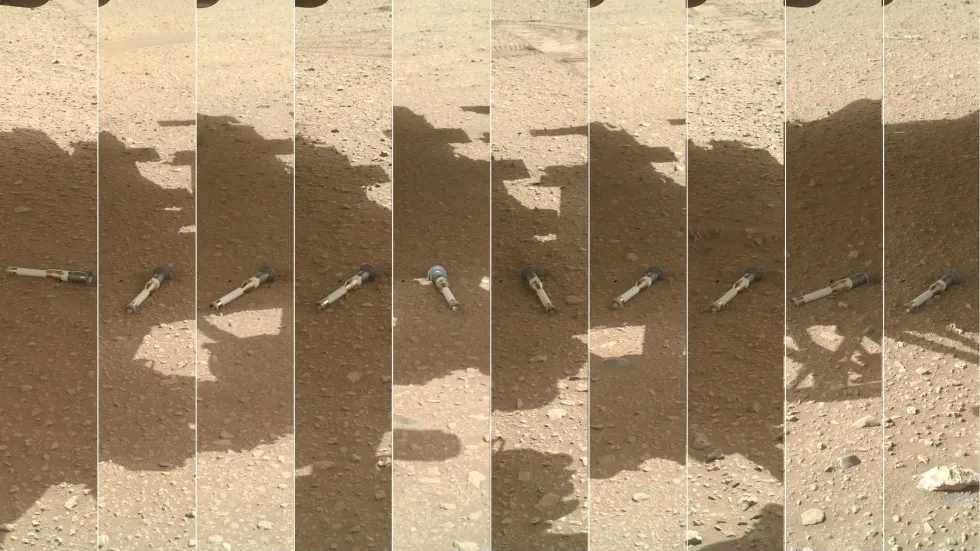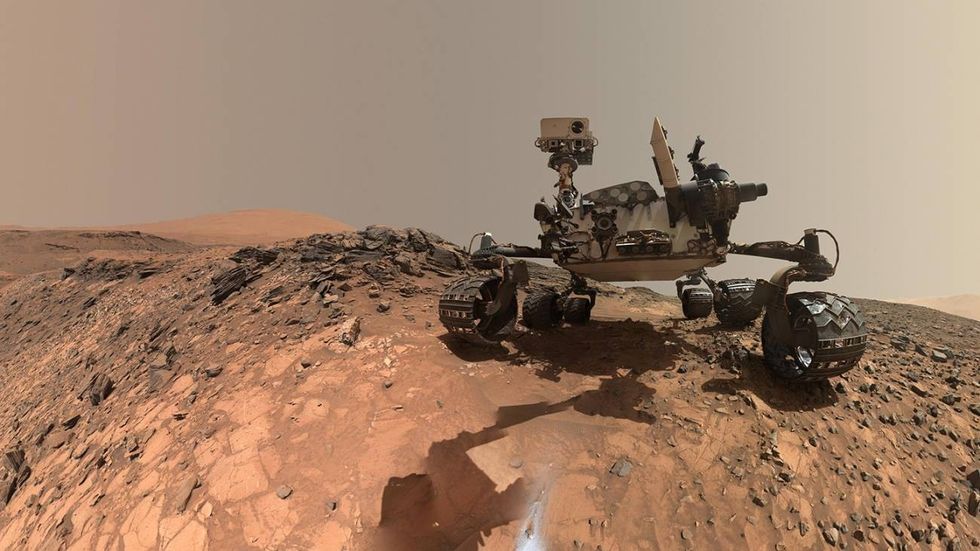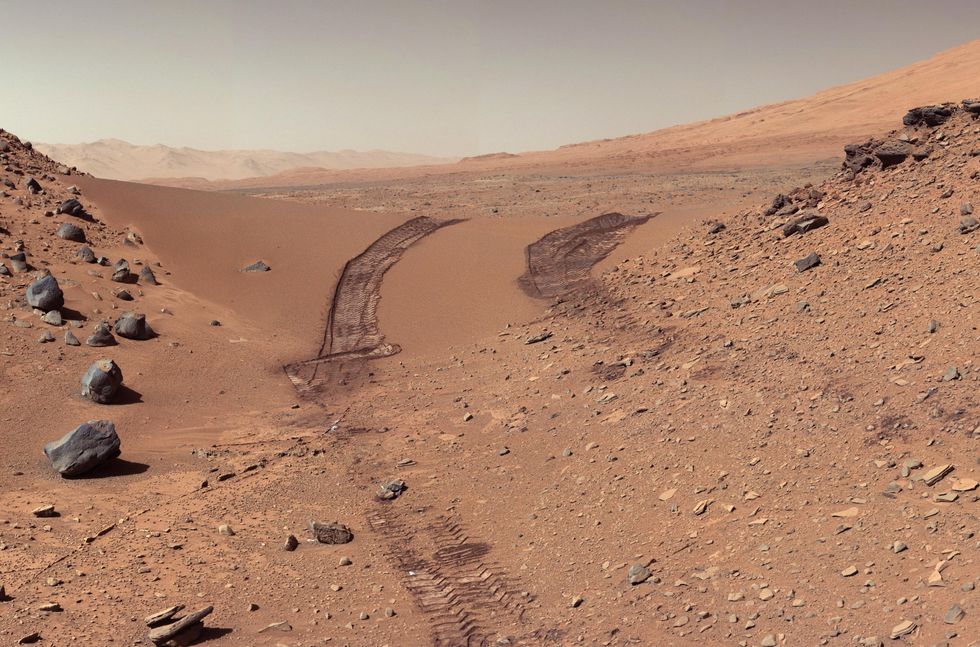Nasa has unveiled a revised plan to bring samples from the surface of Mars back to Earth.
The space agency has announced it would be pursuing two potential options, both costing around $7billion, to retrieve rock and soil samples currently being collected by the Perseverance rover – dramatically reducing the mission’s cost from $11bn and shortening its timeline.
The new approach could see Martian samples arriving on Earth as early as 2035, rather than the previously-projected 2040 timeline, which Nasa Administrator Bill Nelson called “simply unacceptable”.
Under the first option, Nasa would employ a proven “sky crane” landing method previously used for the Curiosity and Perseverance rovers, estimated to cost between $6-7.7bn.

PICTURED: Tubes containing samples from Mars, taken by the Perseverance rover
NASA
The second approach would involve partnering with commercial space companies to develop a new Mars lander, with projected costs ranging from $5.8-£7.1bn.
Both options would feature a smaller rocket system to launch samples off the Martian surface, with the European Space Agency providing a spacecraft to transport them back to Earth.
Perseverance has collected more than two dozen samples since landing in 2021, exploring a 28-mile-wide basin north of the Martian equator that scientists believe was once an ancient river delta.
“Mars Sample Return will allow scientists to understand the planet’s geological history and the evolution of climate on this barren planet where life may have existed in the past”, said Nicky Fox, head of Nasa’s Science Mission Directorate.
MORE SPACE NEWS:

The approach could see Martian samples arriving on Earth as early as 2035
NASA
The samples could also provide crucial insights into whether Mars once hosted microscopic life.
The revised mission design includes a radioisotope power system to operate through Martian dust storms, replacing the originally planned solar panels.
The European Space Agency, a crucial partner in the mission, is currently evaluating Nasa’s new plan for their Earth Return Orbiter to capture the sample container in Mars orbit.
Nelson said moving forward with the sample return mission was urgent – and added that he “pulled the plug” months ago on the original plan due to escalating costs.

Nasa could partner with commercial space companies to lift samples from Mars
NASA
The final decision on which approach to pursue will be made in 2026, with funding needing to begin promptly to achieve the mission’s goals.
And the US faces competition from China, which has announced plans to retrieve Mars samples by 2031.
But Nelson has played down a space race – he says Nasa’s mission is purely scientific.